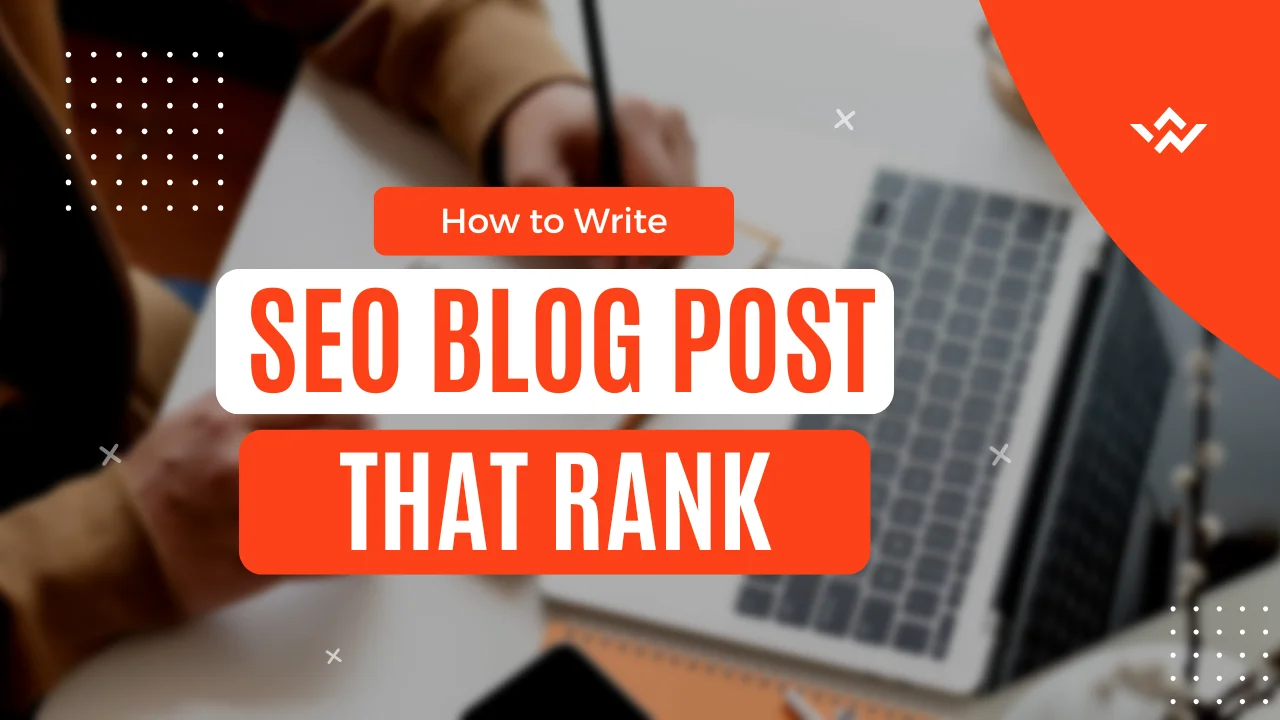SEO blog posts are essential when it comes to creating content that drives traffic and delivers long-term value. Whether you’re running a business website, a niche blog, or an online store, mastering the art of writing SEO blog posts can dramatically boost your visibility on search engines. In this comprehensive guide, we’ll walk you through everything you need to know to create blog content that ranks well and serves your audience’s needs.

1. What Are SEO Blog Posts?
SEO (Search Engine Optimization) blog posts are articles crafted specifically to perform well in search engines like Google. These posts are structured and written using SEO best practices, including keyword research, on-page optimization, and high-quality content strategies, to rank higher in search results and attract organic traffic.
Why SEO Blog Posts Matter:
- Increase organic search traffic
- Build brand authority
- Enhance user engagement
- Drive conversions
2. Understanding Search Intent and Keyword Research
Before you write anything, it’s essential to understand what your target audience is searching for and why. This is where keyword research and understanding search intent come into play.
How to Conduct Keyword Research:
- Use tools like Google Keyword Planner, Ubersuggest, or Ahrefs
- Focus on long-tail keywords related to your niche
- Analyze competitors’ top-performing posts
Types of Search Intent:
- Informational (e.g., “how to write SEO blog posts”)
- Navigational (e.g., “Yoast SEO plugin”)
- Transactional (e.g., “best SEO tools to buy”)
3. Structuring Your SEO Blog Posts for Maximum Impact
Search engines and readers both love well-structured content. Here’s how to build your blog post:
Use Descriptive Headings (H1, H2, H3):
- Include your focus keyword (SEO blog posts) naturally in headings
- Break content into logical, scannable sections
Write Engaging Introductions:
- Start with the keyword within the first 50 words
- Hook the reader with a compelling statement or stat
Craft Valuable Body Content:
- Provide detailed, accurate, and original information
- Use bullet points and numbered lists for clarity
- Incorporate internal and external links for context and depth
Example:
- Internal link:See Our On page SEO CHecklist
- External link: Moz Beginner’s Guide to SEO
4. On-Page SEO Optimization Techniques
On-page SEO refers to elements you can optimize within your content and HTML code. Here’s how to do it:
Key On-Page Elements:
- Title Tag: Include your focus keyword early
- Meta Description: Write a compelling summary using the keyword
- URL Structure: Keep URLs short and keyword-rich
- Image Optimization: Use descriptive filenames and alt text
- Internal Linking: Link to relevant articles within your blog
- External Linking: Reference authoritative sources
5. Tools and Resources to Improve Your SEO Blog Posts
These tools can make your blog writing and optimization process more efficient:
- Yoast SEO – Helps optimize on-page SEO within WordPress
- Surfer SEO – Offers content optimization based on top-ranking competitors
- Grammarly – Ensures your writing is clear and error-free
- Google Trends – Identifies trending topics and search queries
6. Common SEO Writing Mistakes to Avoid
Avoid these pitfalls to ensure your blog posts are optimized and reader-friendly:
- Keyword stuffing (overusing keywords)
- Ignoring search intent
- Writing overly long or thin content
- Failing to update outdated posts
- Neglecting internal linking opportunities
7. Measuring and Improving SEO Blog Post Performance
Use analytics to track your post’s performance and make improvements over time.
Metrics to Monitor:
- Organic traffic (via Google Analytics)
- Keyword rankings (using tools like Ahrefs or SEMrush)
- Bounce rate and time on page
- Backlinks acquired
Regularly update and refresh older posts with new information to maintain their ranking.
Table of Contents
Frequently Asked Questions (FAQs)
1. How long should an SEO blog post be?
An ideal SEO blog post should be at least 1,200–2,000 words long to provide comprehensive value and rank for multiple keywords.
2. Can I optimize a blog post after it’s published?
Yes! You can and should regularly update posts to improve or maintain rankings.
3. How many times should I use the focus keyword?
Aim for a keyword density of around 1–1.5% and use variations and LSI (Latent Semantic Indexing) keywords.
4. Is it necessary to use images in SEO blog posts?
Yes, images make your content more engaging and provide additional SEO benefits through alt tags.
Conclusion and Next Steps
Writing effective SEO blog posts is both an art and a science. By understanding your audience, conducting keyword research, structuring your content thoughtfully, and using proven on-page techniques, you can craft posts that consistently rank high and bring value to your readers.
Start applying these strategies today and monitor your results over time. Remember, great content combined with smart SEO is a long-term investment that pays off.
Want to dive deeper? Explore our guide on Content Marketing Strategies That Work and continue optimizing your digital presence.





![Read more about the article Tagshop.ai Review [2025]: The Ultimate Visual Commerce & Shoppable Gallery Tool](https://pasivemarketer.com/wp-content/uploads/2025/06/Blue-Professional-Digital-Marketing-Youtube-Thumbnail-768x432.webp)
